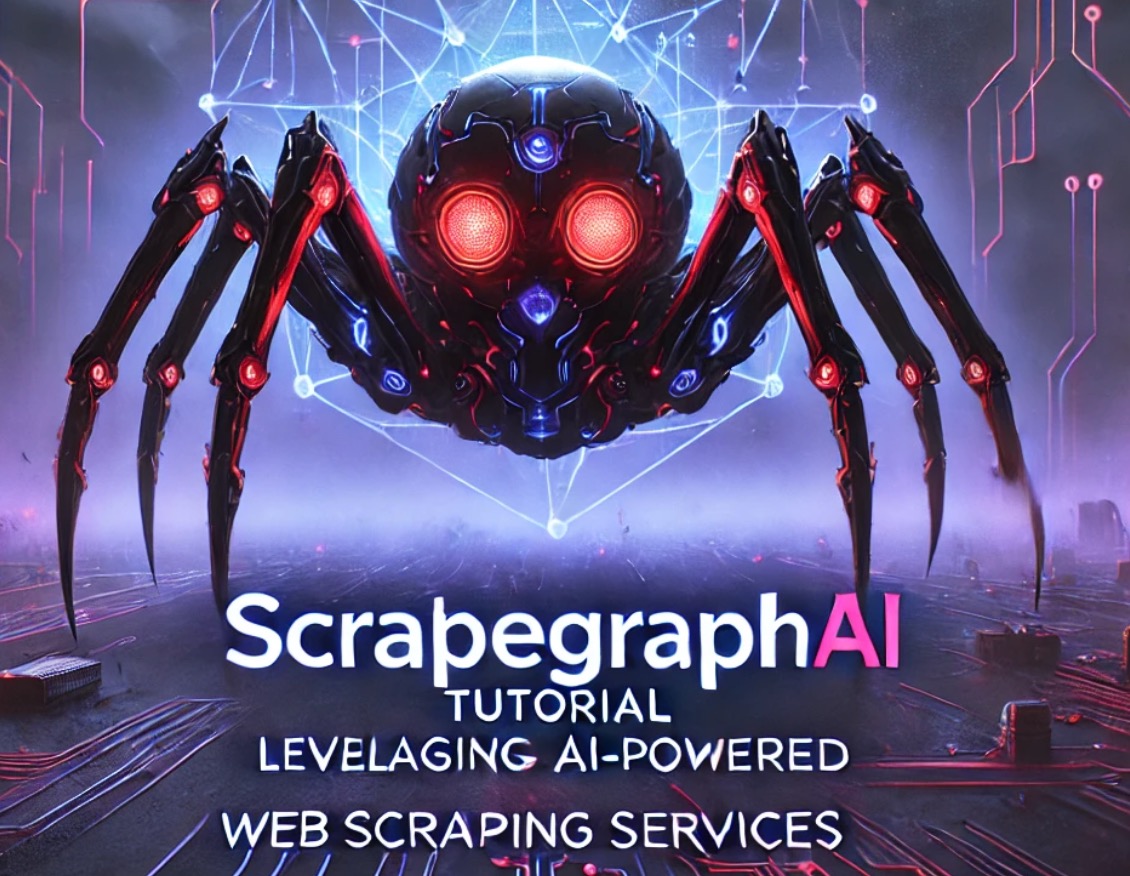Build a Full-Stack AI Web App in 12 Minutes: The Ultimate Guide
Learn how to build a full-stack AI web app in 12 minutes using Cursor, OpenAI o1, Vercel v0, ScrapeGraphAI & Patched.

In this tutorial, we'll demonstrate how to rapidly develop a full-stack AI web application by integrating several powerful tools: Cursor, OpenAI's o1 model, Vercel's v0, ScrapeGraphAI, and Patched. This combination allows for efficient prototyping and deployment of AI-driven applications.
Tools Overview
- Cursor: An AI-enhanced code editor that assists in writing and understanding code.
- OpenAI o1 Model: A powerful language model capable of understanding and generating human-like text.
- Vercel v0: A platform for deploying web applications with ease.
- ScrapeGraphAI: An AI-powered web scraping tool that simplifies data extraction from websites.
- Patched: A tool for managing and deploying AI agents in production environments.
Step 1: Set Up Your Development Environment
Begin by installing the necessary tools and setting up your development environment.
bash# Install ScrapeGraphAI pip install scrapegraphai # Install Playwright for browser automation pip install playwright playwright install
Step 2: Create a ScrapeGraphAI Pipeline
Use ScrapeGraphAI to extract data from a target website. Here's an example of how to set up a simple scraping pipeline:
pythonfrom scrapegraph_py import Client from scrapegraph_py.logger import sgai_logger sgai_logger.set_logging(level="INFO") # Initialize the client sgai_client = Client(api_key="your-api-key-here") # SmartScraper request response = sgai_client.smartscraper( website_url="https://example.com", user_prompt="Extract webpage information" ) # Print the response print(f"Request ID: {response['request_id']}") print(f"Result: {response['result']}") if response.get('reference_urls'): print(f"Reference URLs: {response['reference_urls']}") sgai_client.close()
Step 3: Integrate with OpenAI's o1 Model
Leverage OpenAI's o1 model to process and analyze the scraped data. For example, you can summarize product descriptions or categorize items based on their features.
pythonimport openai openai.api_key = "your-openai-api-key" # Example: Summarize product descriptions response = openai.ChatCompletion.create( model="gpt-4o", messages=[ {"role": "system", "content": "You are a helpful assistant."}, {"role": "user", "content": f"Summarize the following product descriptions: {response['result']}"} ] ) summary = response['choices'][0]['message']['content'] print(summary)
Step 4: Deploy with Vercel v0
Use Vercel v0 to deploy your application. Vercel simplifies the deployment process, allowing you to go from development to production quickly.
- Initialize your project with Vercel:
bashvercel init
- Follow the prompts to set up your project.
Ready to Scale Your Data Collection?
Join thousands of businesses using ScrapeGrapAI to automate their web scraping needs. Start your journey today with our powerful API.
- Deploy your application:
bashvercel deploy
Step 5: Manage AI Agents with Patched
Integrate Patched to manage your AI agents effectively. Patched provides tools to monitor, update, and scale your AI agents in production environments.
- Monitor: Keep track of your AI agents' performance and health.
- Update: Deploy updates to your AI agents seamlessly.
- Scale: Adjust resources allocated to your AI agents based on demand.
Frequently Asked Questions
What is a full-stack AI application?
Components include:
- Frontend interface
- Backend processing
- AI/ML models
- Data storage
- API integrations
- Monitoring systems
What tools are needed for AI development?
Essential tools include:
- ScrapeGraphAI
- OpenAI models
- Vercel platform
- Database systems
- Frontend frameworks
- Monitoring tools
How do I integrate AI into my stack?
Integration steps:
- API setup
- Model selection
- Data pipeline
- Error handling
- Performance monitoring
- Testing procedures
What are common challenges?
Challenges include:
- Model performance
- Integration complexity
- Resource management
- Scalability issues
- Error handling
- Cost optimization
How do I ensure AI reliability?
Reliability measures:
- Regular testing
- Error monitoring
- Performance tracking
- Data validation
- Backup systems
- Failover procedures
What security measures are important?
Security includes:
- API key protection
- Data encryption
- Access control
- Error handling
- Audit logging
- Compliance checks
How do I optimize AI performance?
Optimization strategies:
- Model tuning
- Caching
- Load balancing
- Resource allocation
- Request batching
- Performance monitoring
What deployment options exist?
Deployment options:
- Cloud platforms
- Edge computing
- Serverless
- Container-based
- Hybrid solutions
- On-premise
How do I handle data management?
Data management includes:
- Storage solutions
- Processing pipelines
- Validation systems
- Backup procedures
- Access control
- Privacy measures
What are the costs involved?
Cost considerations:
- API usage
- Computing resources
- Storage needs
- Development time
- Maintenance
- Support
How do I scale AI applications?
Scaling strategies:
- Load distribution
- Resource optimization
- Caching systems
- Performance tuning
- Monitoring tools
- Capacity planning
What monitoring is needed?
Monitoring needs:
- Performance metrics
- Error tracking
- Usage statistics
- Cost analysis
- System health
- User behavior
How do I maintain AI applications?
Maintenance includes:
- Regular updates
- Performance checks
- Error monitoring
- System optimization
- Documentation
- Staff training
What development skills are needed?
Required skills:
- Frontend development
- Backend programming
- AI/ML knowledge
- DevOps expertise
- Database management
- System architecture
What future trends should I watch?
Future trends:
- Edge AI
- AutoML
- Hybrid architectures
- Enhanced automation
- Improved efficiency
- New AI capabilities
Conclusion
By combining Cursor, OpenAI's o1 model, Vercel's v0, ScrapeGraphAI, and Patched, you can build and deploy a full-stack AI web application efficiently. This integration streamlines the development process, allowing you to focus on delivering value to your users.
Happy coding! 🚀
Related Resources
Want to learn more about full-stack development and AI integration? Explore these guides:
- Building Intelligent Agents - Learn how to build AI agents
- AI Agent Web Scraping - Deep dive into AI-powered scraping
- LlamaIndex Integration) - Discover advanced data processing techniques
- Mastering ScrapeGraphAI - Learn about ScrapeGraphAI's capabilities
- Pre-AI to Post-AI Scraping - See how AI has transformed development
- Structured Output - Master handling structured data
- Web Scraping 101 - Master the basics of data collection
- Data Innovation - Learn about modern development techniques
- Web Scraping Legality - Understand the legal aspects of development
These resources will help you understand how to build and maintain effective full-stack applications with AI integration.